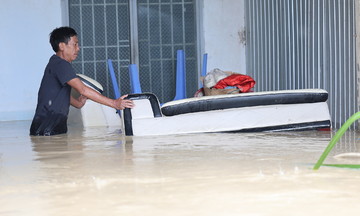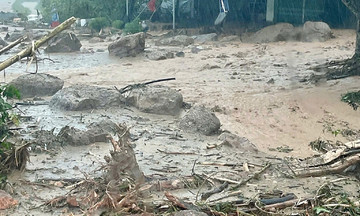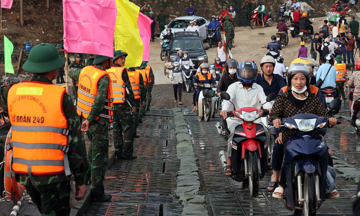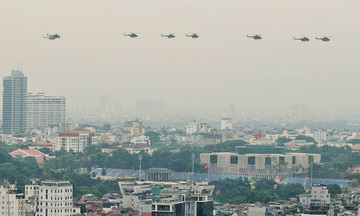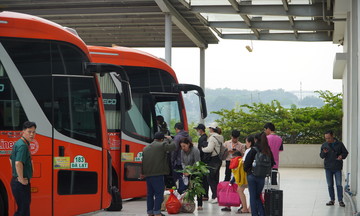The traffic police department (under the Ministry of Public Security) is piloting a command center in Hanoi. This central hub connects multiple smaller centers nationwide and all surveillance cameras on every road.
The center's workspace, spanning over 150 m2, features two rows of computers synced with surveillance cameras. Nearly 10 traffic officers closely monitor a large central screen displaying thousands of camera locations, constantly updating.
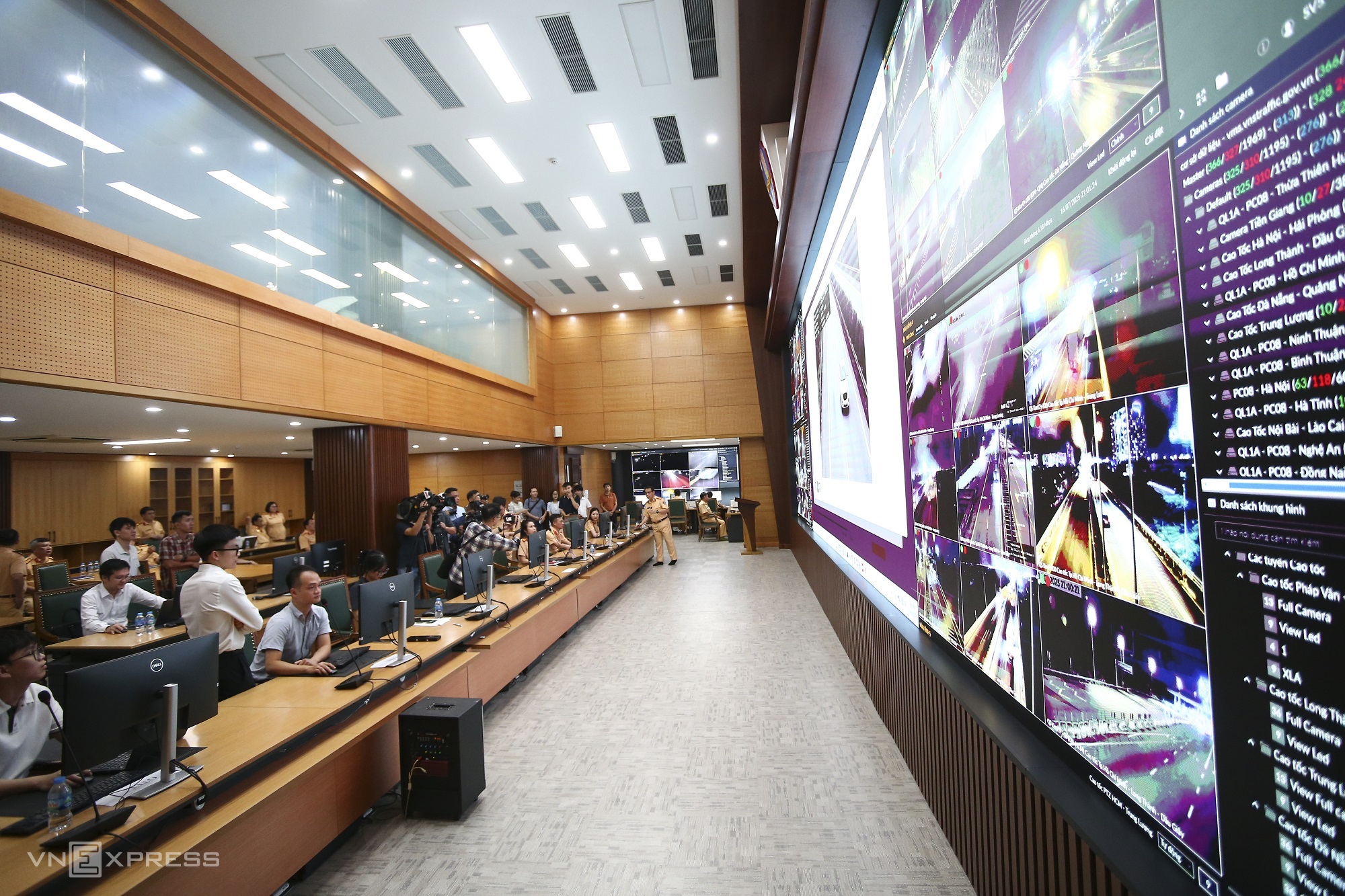 |
Inside the traffic police department's command center. Photo: Viet An |
Inside the traffic police department's command center. Photo: Viet An
Detecting traffic violations with AI
Operating like an "emergency center," the command center runs three 8-hour shifts, starting at 6:30 a.m. Supported by AI, each officer on duty handles a specific task, such as monitoring violations, compiling reports, notifying vehicle owners, and documenting accidents.
The AI software currently detects over 20 of the 100+ actionable traffic violations. Officers directly monitor the screens to handle cases beyond the AI's current capabilities.
Initially, the traffic police department will test violation alerts via the Ministry of Public Security's VNeTraffic app for vehicles on 4 expressways: Noi Bai - Lao Cai, Da Nang - Quang Ngai, TP HCM - Long Thanh - Dau Giay, and TP HCM - Trung Luong.
Upon recording a violation, the AI software extracts images and clips of the incident on the expressway. Using the license plate, color, and other vehicle characteristics, the AI identifies the owner and creates a file.
Officers then verify the violation details against registration, violation history, accident records, inspection data, and owner information. Confirmed violations are sent as alerts via the VNeTraffic app within two hours.
Vehicle owners must install the VNeTraffic app to receive notifications.
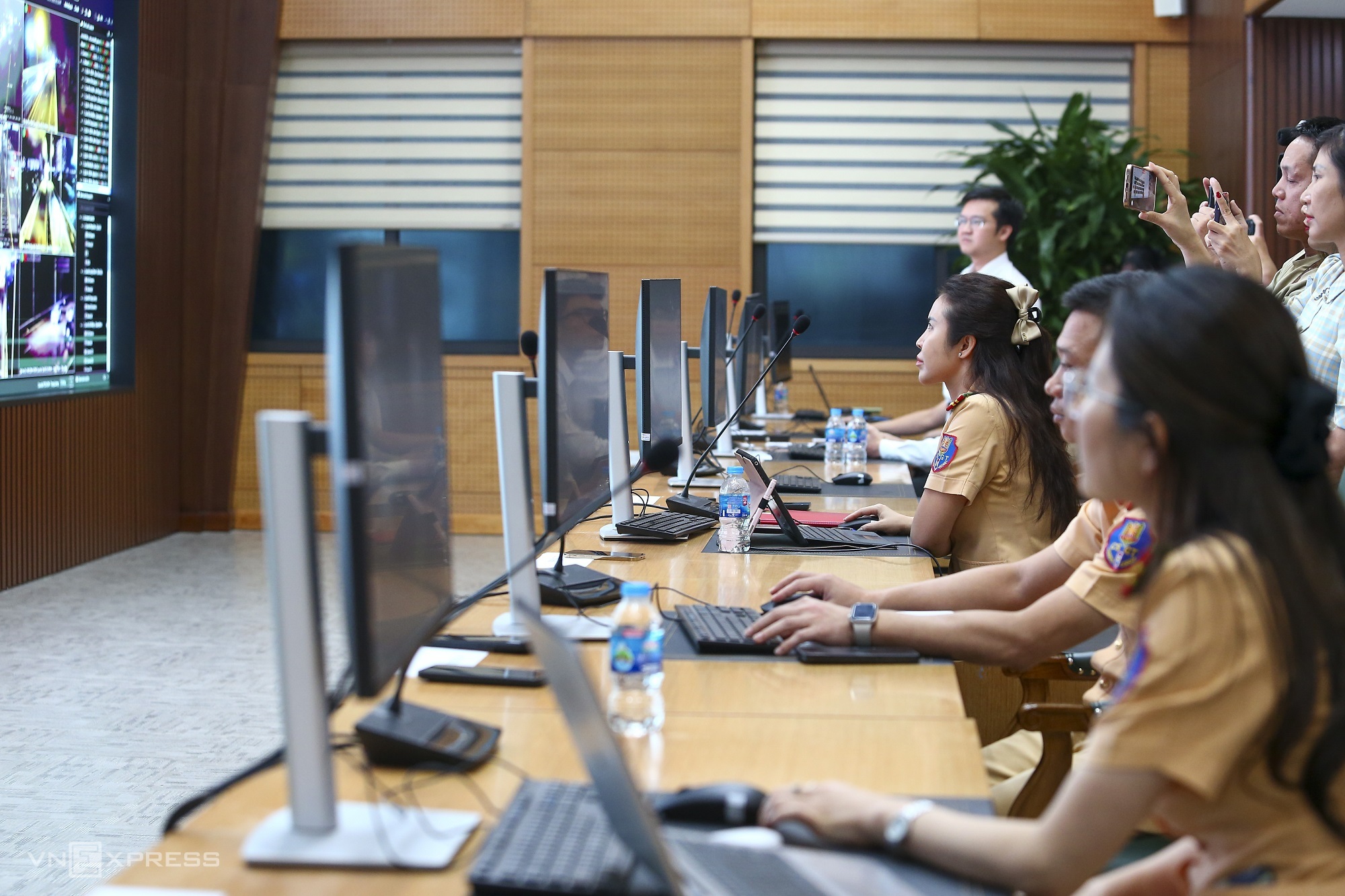 |
Traffic officers work via computers and a large screen. Photo: Viet An |
Traffic officers work via computers and a large screen. Photo: Viet An
Managing traffic police and equipment
Colonel Pham Quang Huy, deputy director of the traffic police department, explained that the command center not only monitors and processes violations but also manages traffic police patrols. Data from equipment like breathalyzers and speed guns are transmitted to the center.
"The software shows which officer is on duty and where, enabling the center to dispatch officers to accidents or incidents," Colonel Huy said.
The center also manages all traffic police patrol vehicles nationwide. Using a digital map, officers can track the number of vehicles moving or parked. The system provides details about each patrol team, including personnel, equipment, and current tasks.
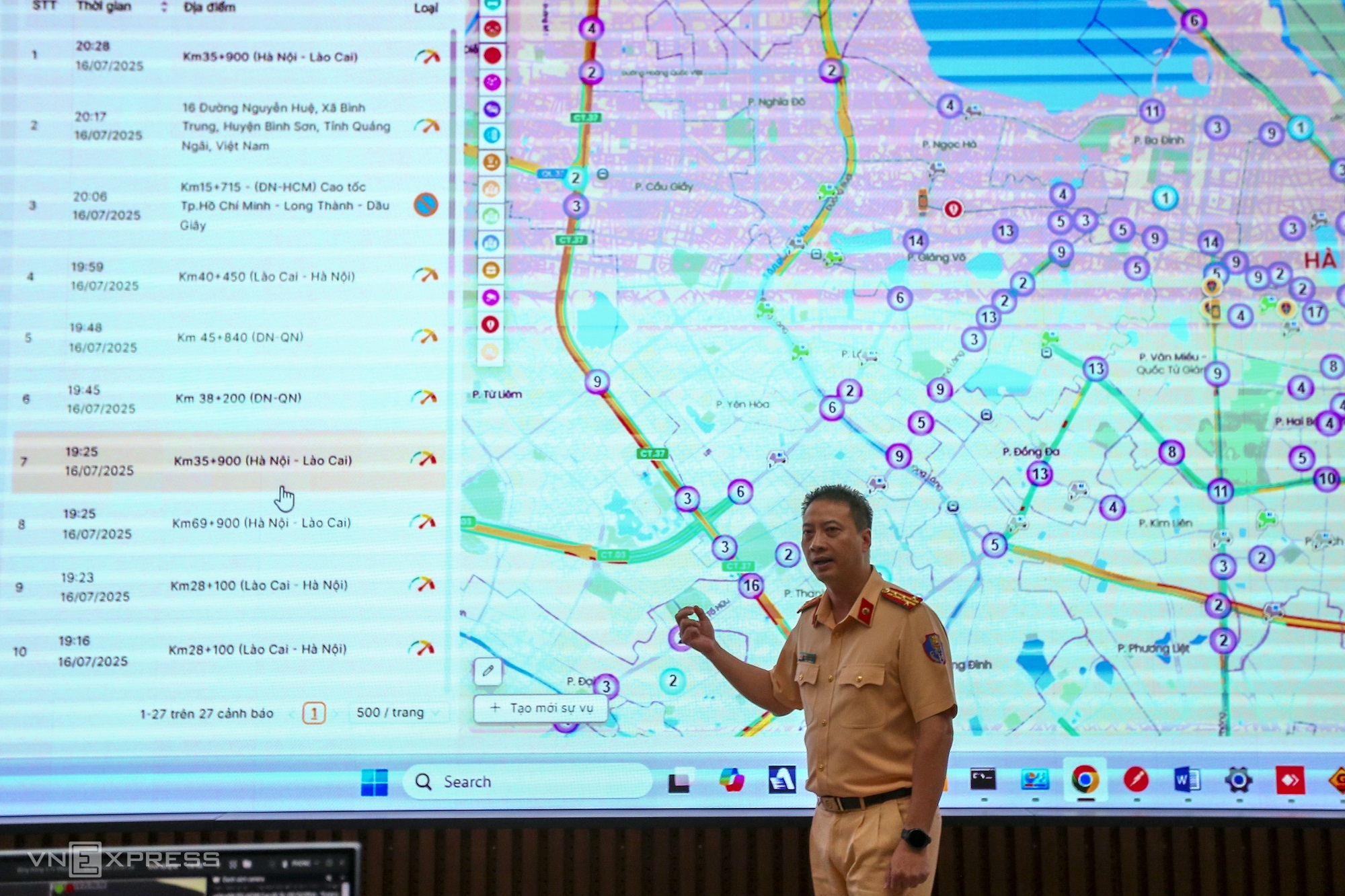 |
The digital map system tracks and displays the routes of violating vehicles. Photo: Viet An |
The digital map system tracks and displays the routes of violating vehicles. Photo: Viet An
Supporting public security
Using security cameras, the command center helps detect disturbances, gatherings, and wanted individuals through facial recognition. When a registered face appears on camera, the system identifies them and retrieves their information, even mapping their routes and vehicles used.
The center also assists accident investigations. For hit-and-runs, if a victim describes a red car with a white-shirted driver, the system filters vehicles matching that description within a specific timeframe. The software then reconstructs the vehicle's route around the time of the accident.
"The center coordinates, analyzes, records, and processes information automatically. The AI software can identify many traffic violations. Even with blurred license plates, the AI can analyze and reconstruct vehicle routes," Colonel Huy stated.
In addition to traffic police cameras, the center will soon incorporate footage from private and organizational cameras.
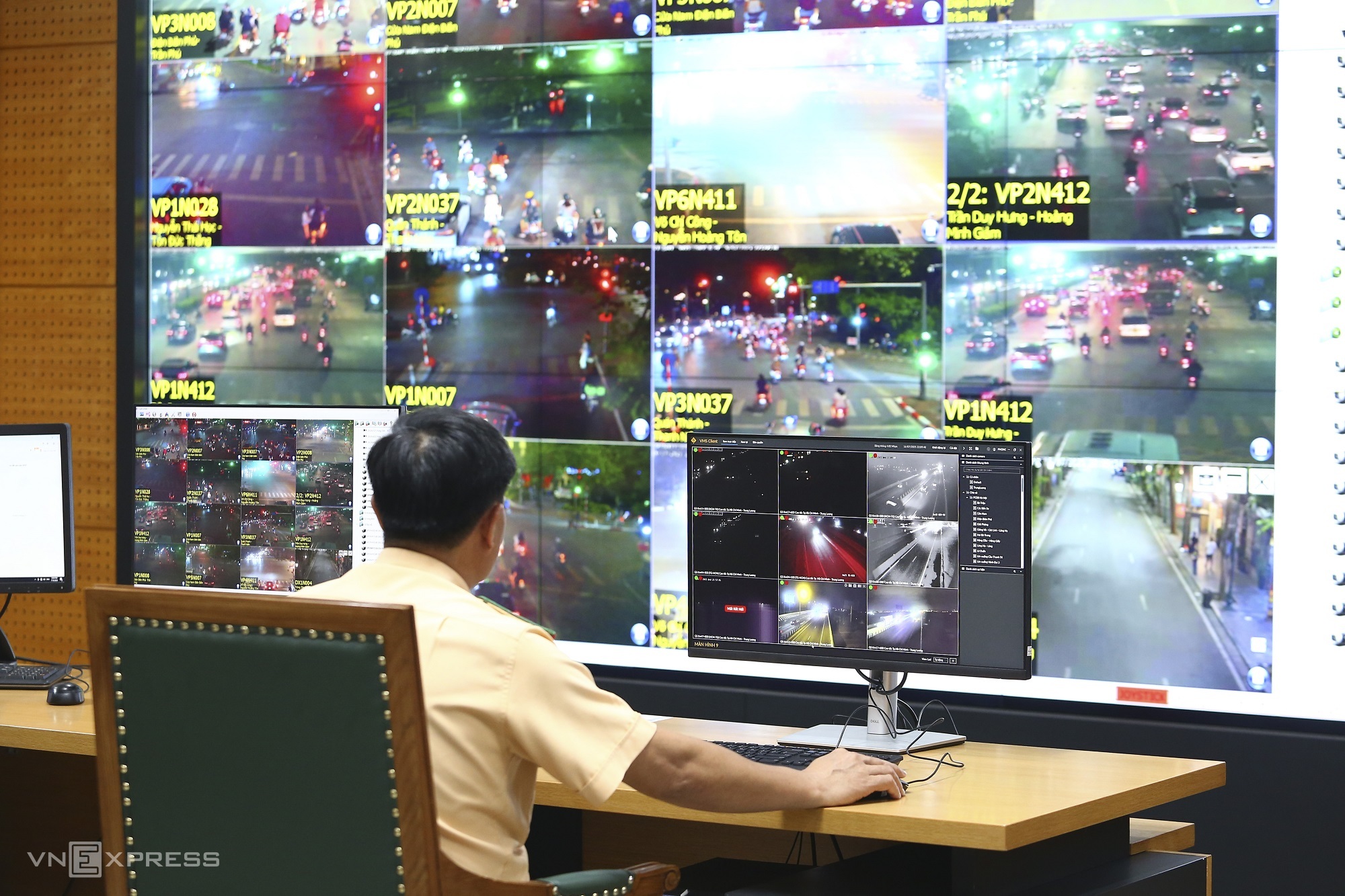 |
Major cities like Hanoi and TP HCM have dedicated monitoring areas. Photo: Viet An |
Major cities like Hanoi and TP HCM have dedicated monitoring areas. Photo: Viet An
The traffic police department is also implementing additional features like paying fines and road tolls through the app. "The goal is to operate entirely electronically with transparency, minimizing direct contact and simplifying procedures," a department representative added.
Viet An



